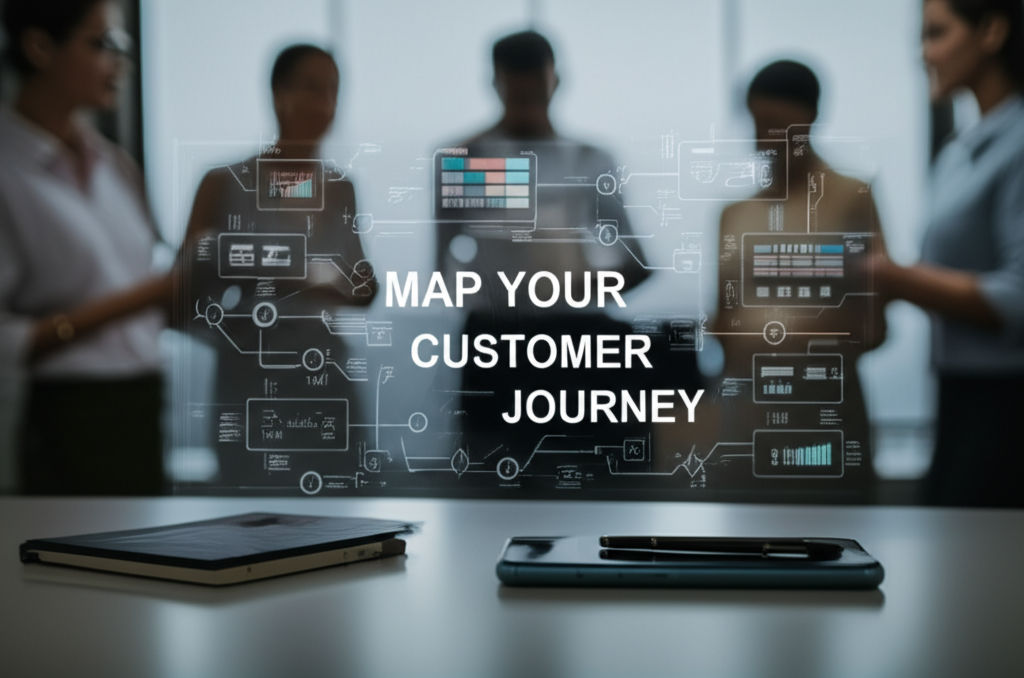Boost Employee Engagement Now
Emily Willis

Photo: Boost Employee Engagement Now
Boost Employee Engagement Now: A Comprehensive Guide to a Thriving Workforce
In today's dynamic professional landscape, employee engagement has emerged as a cornerstone of organizational success. It's more than just job satisfaction; it's about the profound mental and emotional connection employees feel toward their work, their team, and the overarching goals of their organization. Engaged employees are not merely clocking in; they are actively enthusiastic, deeply involved, and genuinely committed to driving positive outcomes for their company.
The modern workforce, influenced by evolving expectations and global shifts, increasingly seeks purpose and meaning in their roles, beyond just a paycheck. This pivotal shift underscores why understanding and actively boosting employee engagement is no longer a luxury but a strategic imperative for any forward-thinking business.
Understanding the "Why": The Business Case for Engagement
The impact of high employee engagement reverberates across every facet of an organization, translating directly into tangible business benefits. Businesses with a highly engaged workforce consistently outperform their counterparts, demonstrating a clear return on investment.
- Reduced Turnover Costs: Engaged employees are significantly less likely to seek opportunities elsewhere, leading to lower employee turnover rates. This directly reduces the substantial costs associated with recruitment, hiring, and training new staff, safeguarding institutional knowledge and maintaining team cohesion.
- Increased Productivity and Performance: When employees are invested and enthusiastic, their productivity naturally soars. Highly engaged teams show increased efficiency and produce higher-quality work, contributing to better overall business performance. Studies show that companies with highly engaged workforces can see up to 17% higher productivity.
- Enhanced Customer Satisfaction: Engaged employees are more likely to go the extra mile, leading to improved customer service and loyalty. Their commitment to the company's values often translates into exceptional interactions with clients.
- Stronger Company Culture: A culture of engagement fosters a positive and supportive work environment where employees feel valued, respected, and heard. This cultivates mutual respect and a sense of belonging, which are vital for a thriving workplace.
- Improved Innovation: When employees feel connected and empowered, they are more inclined to contribute fresh ideas and creative solutions, driving innovation within the organization.
- Higher Profitability: The cumulative effect of reduced turnover, increased productivity, and enhanced customer satisfaction directly impacts the bottom line. Companies with highly engaged workforces have been shown to achieve significantly higher profitability, with some reports indicating a 21% increase.
Despite these undeniable benefits, recent trends indicate a concerning decline in employee engagement in some regions. For instance, U.S. employee engagement reached its lowest level in a decade in 2024, with only 31% of employees feeling engaged. This highlights an urgent need for organizations to re-evaluate and revitalize their engagement strategies.
Key Pillars of Employee Engagement
To effectively boost employee engagement, it's crucial to understand the foundational elements that contribute to a committed and enthusiastic workforce. These pillars form the basis of a comprehensive engagement strategy:
Clear and Consistent Communication
Open, transparent, and two-way communication is the bedrock of engagement. Employees need to feel informed about company goals, changes, and how their work contributes to the bigger picture. Regular feedback, both formal and informal, also plays a critical role in helping employees understand their performance and feel heard.
Recognition and Appreciation
Acknowledging and celebrating employees' efforts and achievements is a powerful motivator. Both formal recognition programs and simple, timely expressions of gratitude can significantly boost morale and commitment. Research indicates that recognition is a top motivator for a significant percentage of employees.
Growth and Development Opportunities
Employees are motivated by the prospect of learning new skills and advancing their careers. Investing in professional development, offering training, and providing clear career pathways demonstrate that the organization values its people and is committed to their long-term success. Eighty percent of employees agree that learning and development opportunities would enhance their engagement.
Well-being and Work-Life Balance
Supporting employees' physical and mental health, and promoting a healthy work-life balance, are crucial for sustained engagement. This includes offering flexible work arrangements, stress management resources, and fostering an environment that prevents burnout. Engaged employees tend to have higher well-being.
Purpose and Meaningful Work
Employees want to understand how their daily tasks connect to the broader mission and values of the company. When individuals see the impact of their work and feel a sense of purpose, they are more emotionally invested and motivated.
Effective Leadership and Management
Managers play a pivotal role in employee engagement. Supportive, empowering leaders who provide clear expectations, ongoing coaching, and consistent feedback are essential for fostering an engaged team.
Actionable Strategies to Boost Employee Engagement
Translating these pillars into practical actions requires a deliberate and sustained effort. Here are actionable strategies organizations can implement to boost employee engagement:
Strategy 1: Foster a Culture of Open Communication
- Implement Regular Check-ins: Encourage managers to hold frequent one-on-one meetings with their direct reports to discuss progress, challenges, and aspirations.
- Promote Transparency: Share company updates, strategic decisions, and performance metrics openly. This helps employees feel informed and connected to the organization's direction.
- Establish Feedback Channels: Create multiple avenues for employees to provide feedback, including anonymous surveys, suggestion boxes, and open "office hours" with leadership. Actively listen to employee input and communicate how their feedback is being used.
Strategy 2: Implement Robust Recognition Programs
- Diverse Recognition Methods: Go beyond annual awards. Implement peer-to-peer recognition systems, public shout-outs in team meetings, company-wide announcements, and small, timely gestures of appreciation.
- Link Recognition to Values: Tie recognition to specific actions that embody company values, reinforcing desired behaviors and a positive culture.
- Personalize Appreciation: Understand what motivates individual employees and tailor recognition accordingly. A personalized thank you can be incredibly impactful.
Strategy 3: Invest in Employee Development
- Offer Learning Opportunities: Provide access to training programs, workshops, online courses, and industry conferences. This demonstrates a commitment to their growth.
- Create Clear Career Pathways: Work with employees to map out potential career progression within the company, identifying necessary skills and experiences.
- Encourage Cross-Training and Mentorship: Allow employees to shadow other roles or participate in projects outside their immediate team to broaden their skills and understanding of the business. Establish mentorship programs to facilitate knowledge transfer and career guidance.
Strategy 4: Prioritize Employee Well-being
- Promote Flexible Work Arrangements: Offer options like remote work, hybrid models, or flexible hours where feasible, allowing employees greater autonomy and work-life balance.
- Provide Mental Health Support: Offer Employee Assistance Programs (EAPs) and resources for stress management, counseling, and mental well-being.
- Encourage Breaks and Vacation: Foster a culture that encourages employees to take regular breaks and utilize their vacation time to recharge and prevent burnout.
Strategy 5: Cultivate a Sense of Purpose
- Articulate Company Vision and Mission: Regularly communicate the organization's mission, values, and strategic goals.
- Connect Individual Roles to the Big Picture: Help employees understand how their specific tasks and contributions directly impact the company's overall success and mission.
- Involve Employees in CSR Initiatives: Provide opportunities for employees to participate in corporate social responsibility (CSR) activities, connecting their work to broader societal impact.
Strategy 6: Empower Leaders to Engage
- Provide Leadership Training: Equip managers with the skills and resources needed to effectively lead, coach, and engage their teams. This includes training on communication, feedback, and empathy.
- Lead by Example: Senior leadership must model the desired behaviors, demonstrating commitment to engagement through their own actions and interactions.
- Resource Managers: Ensure managers have the necessary tools, time, and support to implement engagement initiatives within their teams.
Measuring Employee Engagement: How to Know You're Succeeding
Implementing engagement strategies is only half the battle; measuring their effectiveness is crucial for continuous improvement. Regularly tracking key metrics allows organizations to gauge the impact of their efforts and identify areas for further focus.
- Employee Engagement Surveys: These are among the most common and effective ways to measure engagement. Surveys can assess various factors like job satisfaction, commitment, and feedback receptiveness.
- Annual Surveys: Provide a comprehensive overview of engagement levels and trends over time.
- Pulse Surveys: Shorter, more frequent surveys that can quickly identify shifts in morale and engagement, allowing for timely interventions.
- Employee Net Promoter Score (eNPS): A quick and simple metric that asks employees how likely they are to recommend their organization as a place to work. It provides a snapshot of employee loyalty and engagement.
- Retention and Turnover Rates: High
Latest ✨
View All"Education for All" is a fundamental human right. Learn how equitable access to quality learning unlocks a brighter future for everyone.
Emily Willis
Demystify customer journey mapping! Learn to visualize customer paths, uncover pain points, and create superior experiences for sustainable business growth.
Emily Willis
exploring different cultures through their traditional cuisine, highlighting iconic dishes and the cultural significance behind them. It takes the reader on a culinary tour around the world, showcasing the diverse flavors and culinary traditions of various regions such as Asia, Europe, the Americas, Africa, and Oceania.
Emily Willis
hree incredible destinations - Nepal, Peru, and South Africa - known for their adventurous activities such as trekking, white-water rafting, and mountain biking. It emphasizes the importance of responsible adventure travel, including supporting sustainable tour operators, respecting local customs, minimizing environmental impact, and supporting local communities.
Emily Willis
Business
View All
June 8, 2025
Market Research: Your Business CompassMarket research: your ultimate business compass. Gain vital insights on customers, competitors & trends to steer your business to growth & success.
Emily Willis

June 8, 2025
Plan Your Business Exit StrategyPlan your business exit strategy: a roadmap to a successful future. Maximize value, protect your legacy, and ensure a smooth transition.
Emily Willis

June 8, 2025
Business Law: What You Must KnowBusiness law is key for entrepreneurs! Safeguard your venture, ensure smooth operations, and avoid costly disputes. Learn essential legal insights here.
Emily Willis
Economy
View AllDive into the economics of monopolies. Learn how these single-rule markets form, their characteristics, and their impact on prices, quality, and growth.
Read Moreeconomic growth prospects of major countries such as the United States, China, the European Union, Japan, and India. It highlights the factors driving their growth, challenges they face, and opportunities for businesses and investors. Each country has unique strengths and risks, and understanding these dynamics is crucial for strategic decision-making.
Read MoreInvolved in an Uber accident? Learn why hiring an Uber accident lawyer is crucial, what your legal options are, and how to choose the right attorney for your case
Read MoreEntertainment
View All
August 5, 2024
Music's Evolving Landscape: Technology, Social Media, and Global TrendsThe music industry has undergone significant changes due to technological advancements, social media, and a growing global audience. The shift from analog to digital formats, the rise of streaming services, and the impact of social media on artist-fan relationships are explored.
Emily Willis

August 4, 2024
The Evolution of Digital Distribution in the Music Industry: Challenges and OpportunitiesThe music industry has been transformed by digital distribution, which allows quick access to a vast catalog of music through streaming services and online stores.
Emily Willis

August 5, 2024
VR and AR Transform EntertainmentVirtual reality (VR) and augmented reality (AR) are transforming the entertainment industry by offering immersive experiences that blur the lines between the real and virtual worlds. VR completely transports users into computer-generated environments, while AR overlays digital elements onto the real world.
Emily Willis
Health
View Allmaintaining good health and well-being through nutritional choices. A balanced diet, incorporating whole foods, staying hydrated, consuming nutrient-dense foods, managing portion sizes, practicing mindful eating, eating regular meals and snacks, considering supplements, and adopting sustainable eating practices are all highlighted as effective strategies for enhancing overall.
Emily Willis
preventive health measures in promoting longevity and enhancing quality of life. It discusses essential strategies such as maintaining a balanced diet, regular physical activity, adequate sleep, stress management, regular health screenings, immunizations, avoiding harmful substances, and prioritizing mental health.
Emily Willis
Nutrition is crucial for maintaining overall body health, impacting energy levels, disease prevention, and overall well-being. A healthy diet includes fruits, vegetables, whole grains, proteins, healthy fats, and hydration. Proper nutrition positively affects energy levels, immune function, heart health, weight management, and mental health. Practical tips for improving nutrition include planning balanced meals, reading food labels, cooking at home, limiting processed foods, and staying hydrated. By prioritizing nutrition and making informed choices, individuals can enhance their health and well-being.
Emily Willis
Trending 🔥
View All
1
2
3
4
5
6
8
9
10
Sports
View AllAugust 5, 2024
Inclusive Playing Field: Creating a Welcoming and Accessible Sports Environment
Read MoreAugust 4, 2024
Benefits of Cross Training for Athletes: Improves Performance and Prevents Injuries
Read MoreTechnology
View All
August 5, 2024
What is Blockchain and How does it Work?
Blockchain technology is a decentralized digital ledger that records transactions securely and transparently across multiple computers. Key concepts include decentralization, cryptographic security, and consensus mechanisms. Transactions are verified, grouped into blocks, and added to the blockchain through a consensus process.

August 4, 2024
How Flying Qudits Promise a Revolution in Quantum Communication
communication, flying qudits are poised to revolutionize the way we transmit and process information. With the potential for unbreakable encryption, blazing-fast quantum internet, and advancements in various fields, the future of flying qudits looks promising. While there are challenges to overcome, researchers are actively working on refining the technology. Overall, flying qudits offer a glimpse into a quantum future that is faster, safer, and filled with endless possibilities.

August 5, 2024
Challenges and Opportunities in Implementing IoT Technology
The Internet of Things (IoT) is revolutionizing industries by enabling real-time monitoring, automation, and decision-making. However, implementing IoT technology comes with challenges such as security concerns, interoperability issues, data management, scalability, and cost. Despite these challenges, IoT offers opportunities for operational efficiency, enhanced customer experience, innovation, environmental sustainability, and business intelligence.

August 4, 2024
Exploring the Potential of Quantum Computing in Modern Technology
Quantum computing is a revolutionary technology that uses quantum bits, or qubits, to process information. It has the potential to solve complex problems, revolutionize cryptography, accelerate drug discovery, optimize complex systems, and enhance artificial intelligence.





















